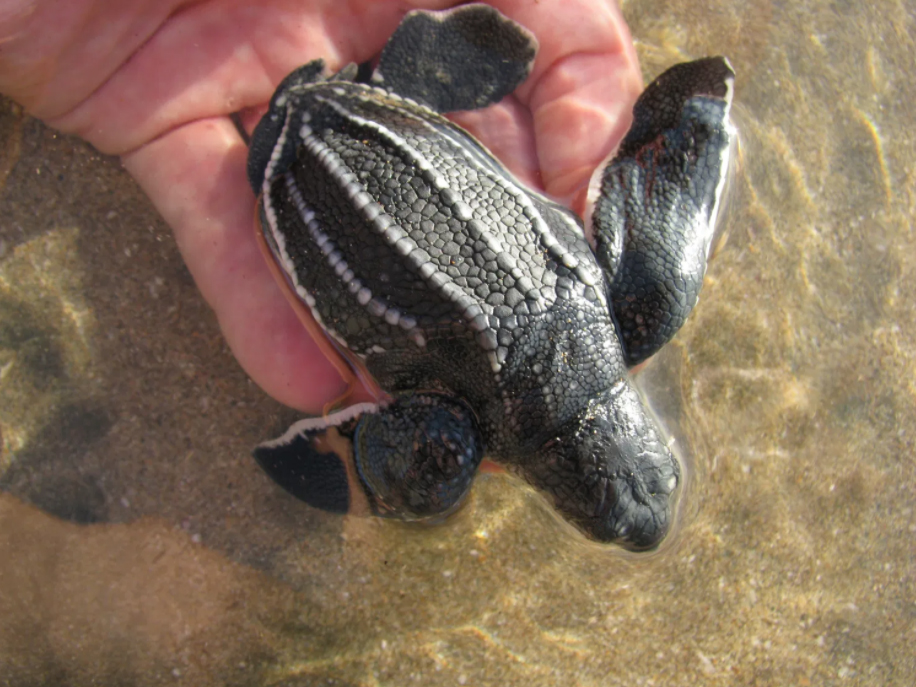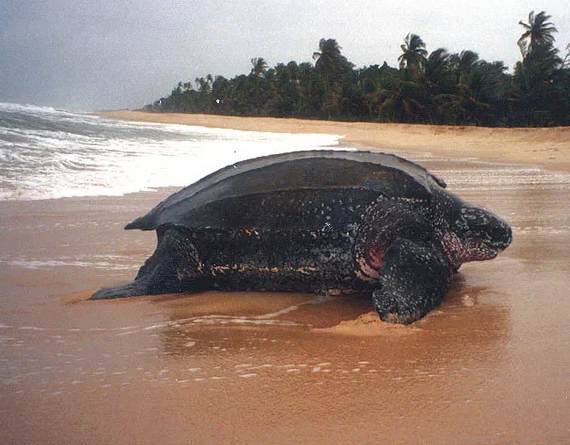.
Turtles, Volcanoes, and 150,000 Kids
Three years ago, British geology student Kimberley Wyatt flew to Costa Rica to protect baby turtles from egg poachers. She was so inspired by the work accomplished by her and her team that since returning, she’s been educating her fellow Brits on saving marine life in their own backyard.
.

Saving Turtles: It All Started In A Volcano
It all started when Kimberley was studying for a degree in geology and needed research experience. She applied for an Earthwatch student fellowship to study active volcanoes in Central America. While she was there, one of the other volunteers mentioned a previous expedition she had been on helping to conserve enormous sea turtles in Costa Rica. It was something she knew she had to be part of immediately. Kimberley didn’t even bother heading home between trips.
“I jumped on a single engine plane and headed straight to Costa Rica.”
.
Warding Off Poachers To Protect Turtle Eggs
On the beaches of Costa Rica where leatherback sea turtles are under threat of extinction due to egg poaching, Kimberley and the other volunteers would find turtle nests and make sure all of the eggs were safe. “The entire experience was just incredible. We monitored any eggs that looked like they might be in danger. I felt like we were able to really protect them.”
Over the 10 day period, Kimberley saw five nests hatch. Each nest produces 100 babies and if the nests hatched in the morning, we would have to grab the baby turtles and put them in wet sand containers until the evening. It’s safer for them to head to sea at night.” The babies weren’t the only inspiration for Kimberley. “Seeing that full grown turtle on the beach for the first time is the most moving experience. It’s almost like seeing a dinosaur. They are upwards of 5 feet long! But it’s just heartbreaking to know that only one in a thousand of all leatherback hatchlings will survive. That is what inspired me to to do what I do today.”
.

Baby leatherback sea turtle after making its way to the ocean.
.
Teaching 150,000 Kids About Threats to Marine Wildlife
Kimberley’s experience helping to save baby sea turtles propelled her to partner with the Marine Conservation Society, a British organization that promotes conservation throughout the waters of England. “I was so inspired saving those turtles that I knew I had to keep my journey in ocean health going. I started working with the Marine Conservation Society. We travel to schools and trade shows to teach people about saving these animals.”
Since 2006, the Marine Conservation Society where Kimberley volunteers has visited 150,000 elementary school kids across England to help them understand the threats to marine wildlife. “From choosing sustainable fish to eat, to the dangers of long line fishing, or not using plastic in school, we try to teach them everyday practices to promote sustainability and protect our friends in the water,” Kimberley said. “Children are always so interested in my time in Costa Rica. We bring a life size replica of a leatherback sea turtles and their eyes light up when they see the enormity of it. Starting to educate them at such a young age gives me so much hope for the future.”
.

An adult sea turtle heading back to the shore.
.
Kimberley has been to every continent on Earth, and today works at lastminute.com writing about her journeys around the globe. She still has an itch to head back out on an Earthwatch Expedition. “That trip to Costa Rica really propelled me to follow my passion and stay involved with protecting marine life today. I would love to go on every expedition! Earthwatch has given me the opportunity to do something I would never, ever, be able to do otherwise.”
.
If you want to join Costa Rican Sea Turtles to help protect baby turtles, Earthwatch still has spots available.
.
Sign up for the Earthwatch Newsletter
Be the first to know about new expeditions, stories from the field, and exciting Earthwatch news.